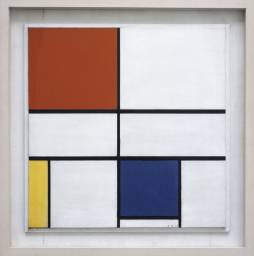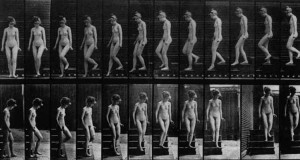I have a fondness for paintings, so its only natural that I gravitate towards museums such as the Tate Modern/Britain and the National Gallery. Some of the pieces I’ve seen from these particular museums have been no less than extraordinary. At the TM, I saw works by Monet and Pollock, discovering once again the beauty in blurred lily pads and splattered paint. But as the TM is also a purveyor of contemporary art, I was also able to see recent works that are – at times painfully – trying to subvert and re-express artistic theories. One of the more outstanding contemporary works I saw at the TM was a video installation by Carolee Schneemann. Made in 1964, Meatjoy is a manipulation of the filmic image as a veritable representation of reality into an exercise on sexual discourse that strives to create the notion that “sex” is in our own skin. Half naked men and women wrestle on the floor and arrange themselves in strange positions, as a hardly discernible voiceover of a woman is heard on the soundtrack. Gradually the cuts become more rapid, and people offscreen begin to throw meat and poultry at the “subjects.” Its shocking, even disgusting. But there is no nudity. Some images evoke sexual acts – but they are not sexual in and of themselves. Anyway, I didn’t particularly “like” the film, but it was interesting – and certainly shocking. You can view a short clip of it here: http://www.youtube.com/watch?v=D6AK9TI3-LU
Since the Tate Modern is a global museum and most of its exhibitions are free, there were a lot of people. The escalators and large spaces reminded me of a shopping mall. Its quite a contrast with the Charles Dickens museum, yet both are museums, right?
At the Tate Britain, I was greeted with a smaller crowd. The day that I went to the Tate Modern I was tired, and trying to view the artworks with an open mind is hard to do when there are hordes of people blocking the works from all angles. TB had no such problems. It itself is an impressive museum with an emphasis on British art (duh) but with a respectable collection of international modern art. I even saw a Mondrian painting. I must’ve been sitting in front of it for nearly half an hour. The painting’s greatest virtue is precisely that it is straightforward and pure. In this sense, its somewhat ironic to call it a piece of abstract art. I like it very much, and was impressed at the evocative power of a most primordial form. The painting even looks like a tatami, a seeming reference to the qualities of humility and tranquility that are intrinsic to Japanese culture.
I saw advertisements about an exhibition at the TB exclusively on Eadweard Muybridge, arguably the first person to invent the ontological nature of the cinema. Enough said. The entrance fee was 10 pounds but I didn’t mind. The Muybridge was a fantastic exhibition, much more extensive that I had imagined; there must been at least six rooms. I also appreciated that there was a chronological order to the exhibition, beginning with Muybridge’s photographs from his early years to the prints from the zoetropes in his later. A proper tribute (and indeed, much deserving) to a pioneer who, although recognized in cinema history, unlike the Lumiere Brothers and Edison/Melies/Porter, is seldom talked about among academics and critics. Just looking at his prints, you realize how much of an influence he has had on the history of the medium. So grateful to have caught this. London has been good to me. If anything, one perk of living in the city is, simply, the range and accessibility you have to the arts.
Mondrian photo courtesy of Tate Britain
Muybridge courtesy of har-avantgarde.blogspot.com



1 response so far ↓
Karl // Sep 23rd 2010 at 09:09
How about some images and links to inform your reader more?
You must log in to post a comment.